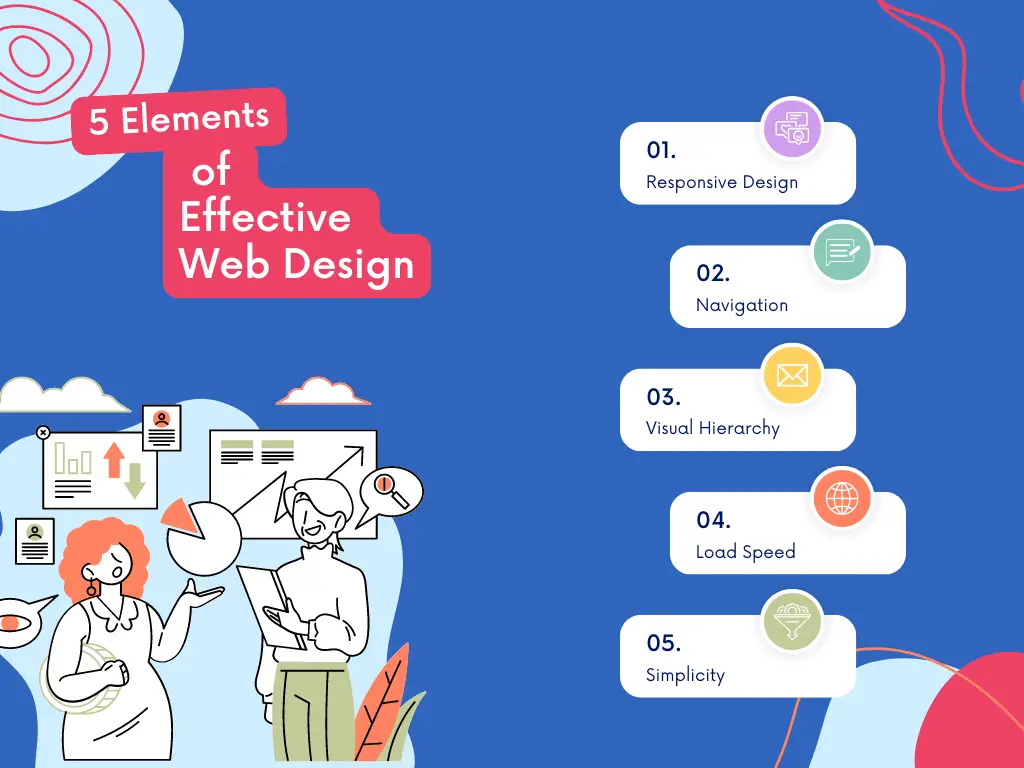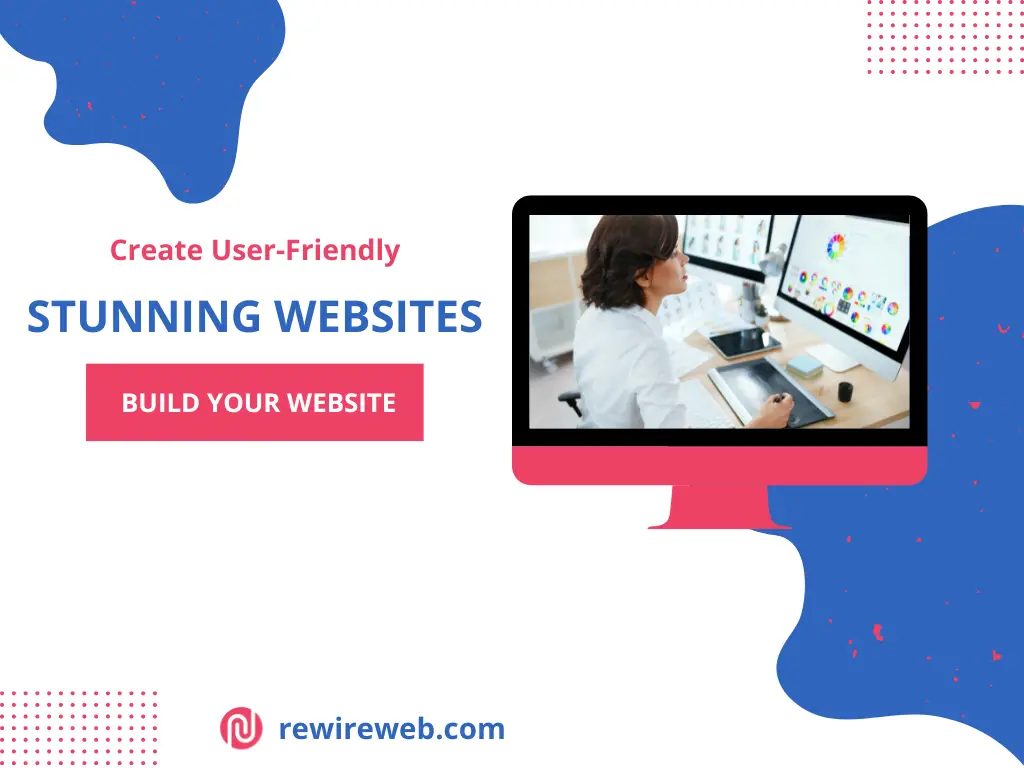In today’s digital landscape, your website often serves as the first point of contact between your business and potential customers. Just like a physical storefront, the design of your website significantly impacts first impressions. A well-crafted website grabs the visitor’s attention and enhances user experience (UX), drives engagement, and can greatly influence your site’s performance in search engine rankings (SEO). This blog post delves into the essentials of effective web design, offering insights on key principles, conversion optimization, tools, and common pitfalls to avoid.
Key Principles of Effective Web Design
Good web design goes beyond aesthetics; it encompasses functionality, usability, and the overall experience for the user. Here are some fundamental principles to guide the creation of a user-friendly and visually appealing website:
- Simplicity:
- Avoid clutter and keep the design clean. Simple layouts help users navigate the site easily and focus on essential information without distractions.
- Navigation:
- Your website’s navigation should be intuitive and straightforward. A well-structured menu and clear call-to-action (CTA) buttons ensure users can find what they’re looking for without frustration.
- Mobile Responsiveness:
- With the increasing use of smartphones, ensuring that your website is mobile-friendly is crucial. A responsive design adapts to various screen sizes, providing a seamless experience across devices.
- Accessibility:
- Your website should be accessible to everyone, including people with disabilities. Implement features like alt text for images, clear headings, and sufficient color contrast to enhance accessibility.
- Visual Hierarchy:
- Use size, color, and positioning to guide users’ attention to key elements, such as headlines, buttons, or important content sections.

Role of Web Design in Conversion Optimization
Web design is pivotal in guiding users toward conversion actions, such as signing up for a newsletter, making a purchase, or requesting a quote. Strategic design elements can subtly influence user behavior and improve conversion rates:
- CTA Placement:
- The positioning of call-to-action buttons can make or break a conversion. They should be prominently placed, easily noticeable, and compelling enough to encourage clicks.
- Color Psychology:
- Colors can evoke emotions and influence decisions. For instance, blue often conveys trust, while red can create a sense of urgency. Choosing the right color scheme can enhance your brand identity and guide user actions.
- Visual Cues:
- Use arrows, lines, or images to direct attention towards conversion points. Visual cues can help in subtly guiding users through the desired flow on your website.
For a deeper dive into conversion-focused design strategies, check out this HubSpot article
Tools and Platforms for Web Design
Choosing the right platform for your website is essential, as it can affect everything from design flexibility to site performance. Here are some popular tools and platforms for web design:
- WordPress:
- WordPress is a versatile platform suitable for businesses of all sizes. It offers extensive customization through plugins and themes, making it ideal for both beginners and experienced designers. However, it may require regular maintenance and updates.
- Webflow:
- Webflow provides a powerful visual editor that allows for greater design freedom without coding. It’s perfect for designers who want to create custom websites but might be overkill for simpler projects.
- Wix:
- Wix is user-friendly with a drag-and-drop interface, making it great for small businesses or personal websites. It offers less customization compared to WordPress or Webflow, but it’s easier to manage for non-technical users.
Pros and Cons of Different Platforms:
Platform | Pros | Cons |
WordPress | Highly customizable, scalable | Requires maintenance, potential security issues |
Webflow | Design freedom, no coding needed | A higher learning curve, more expensive |
Wix | Easy to use, all-in-one solution | Limited scalability, less flexibility |
Common Web Design Mistakes to Avoid
While designing a website, it’s easy to make mistakes that can negatively impact user experience and performance. Here are some common pitfalls to avoid:
- Slow Loading Times:
- A slow website can frustrate users and lead to high bounce rates. Optimize images, use caching, and choose reliable hosting to improve load speeds.
- Cluttered Pages:
- Overloading a page with too much information or too many elements can overwhelm users. Stick to a clear, organized layout with ample white space.
- Lack of Mobile Optimization:
- With a significant amount of web traffic coming from mobile devices, a non-responsive site can drive potential customers away. Ensure your design adapts well to different screen sizes.
- Ignoring SEO:
- Neglecting SEO best practices, such as optimizing meta tags, headings, and alt texts, can make your site less discoverable in search engines.
Website Evaluation Checklist:
Is your site loading within 3 seconds?
Is your navigation easy to use?
Does your website look good on mobile devices?
Are your call-to-action buttons visible and compelling?
Have you optimized images and other media?
Conclusion
Effective web design is more than just creating an attractive site; it’s about building a digital experience that aligns with your business goals and meets your users’ needs. A well-designed website can enhance user experience, boost SEO, and drive conversions, making it a crucial element of your online strategy. Take a moment to review your current web design—consider whether it reflects your brand effectively, meets accessibility standards, and provides a seamless user experience. If there are areas for improvement, don’t hesitate to take action.
Ready to take your website to the next level? Start by evaluating your current design using our checklist, and explore ways to enhance your site for better performance and user engagement.

